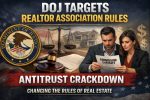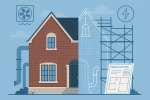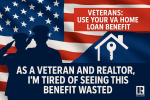By Dennis Norman, on January 1st, 2026 
Happy New Year! As we step into 2026, I want to take a moment to wish you and your family a very Happy and Blessed New Year. Whether 2025 brought you joy, challenges, or a little of both, today marks a fresh start filled with new opportunities and possibilities. Here’s to health, happiness, and success in the year ahead!
If you’re thinking about making a move in 2026, whether it’s buying your first home, moving up, downsizing, or investing—this is a great time to start planning. The real estate market is always shifting, and having an experienced, knowledgeable team on Continue Reading →
By Dennis Norman, on December 26th, 2025 
The most expensive home sold in the St Louis metro area in 2025 (based on MLS data reported to MARIS) was the former home of St Louis Cardinals outfielder Jim Edmonds. Located at 16 Bridle Lane in Frontenac, this 17,200 square foot estate sold in May for $7.75 million, making it the top sale price for the year.
Built in 2020 and sitting on nearly 3 acres in the Ladue School District, this contemporary-style home features 7 bedrooms, 11 baths, a wine cellar that opens into the dining room, an 8-car garage, private putting green, resort-style pool, firepit, and even Continue Reading →
By Dennis Norman, on December 24th, 2025 
The U.S. Department of Justice (DOJ) has weighed in on the Davis v. Hanna Holdings case with a formal Statement of Interest, and it’s a clear signal to the real estate industry. The DOJ argues that real estate trade association rules, specifically those requiring sellers to offer compensation to buyers’ agents, may violate antitrust laws and deserve full scrutiny. For anyone who thought the pressure on commission practices might let up, this filing confirms the opposite.
What makes this noteworthy is the DOJ’s insistence that rules created and enforced by associations like the National Association of REALTORS® are not exempt Continue Reading →
By Dennis Norman, on December 19th, 2025 
A newly pre-filed bill in the Missouri House, HB 2077, aims to stop institutional investors, think hedge funds, private equity firms, and large REITs, from purchasing most residential properties in Missouri starting August 28, 2026. Known as the “End Hedge Fund Control of American Homes Act,” this bill would force institutional investors to divest any 1 to 4-family homes they already own within three years and ban them from acquiring new ones altogether.
There is no doubt this proposal will generate buzz, especially among real estate investors and professionals who have seen institutional capital change the landscape of the single-family Continue Reading →
By Karen Moeller, on December 19th, 2025 
*A new federal reporting requirement affects certain entity and cash transactions nationwide, including St. Louis.*
Not every change in real estate shows up in market statistics or price charts. Some changes are procedural, happening quietly behind the scenes, and only become noticeable when a transaction suddenly feels more complicated than expected.
A new federal reporting rule from the U.S. Treasury Department’s Financial Crimes Enforcement Network, commonly referred to as FinCEN, falls squarely into that category. While it has been discussed for some time at the national level, it is now close enough to implementation Continue Reading →
By Dennis Norman, on December 16th, 2025 
The St. Louis metropolitan area is witnessing a dynamic real estate market, with certain zip codes emerging as hotspots for quick sales. Leading the pack is a zip code in St. Clair County, Illinois, where homes are flying off the market in an average of just 26 days. This area currently has 7 active listings, with an average list price of $70,286, making it an attractive option for budget-conscious buyers seeking swift transactions.
Following closely is a zip code spanning Monroe and St. Clair Counties in Illinois, where the average time on the market is 31 days across 14 listings. Continue Reading →
By Dennis Norman, on December 12th, 2025 
In the dynamic St. Louis metropolitan real estate market, certain school districts are standing out for their rapid home sales. Leading the charge is the Bayless School District in St. Louis, where homes are selling at an impressive pace. With 14 active listings, properties here spend an average of just 30 days on the market, boasting an attractive average list price of $213,914. This makes Bayless a hot spot for families looking to move quickly into their new homes.
Following closely is the Wood River-Hartford DIST 15 in Madison County, Illinois, where the average days on the market is 34, Continue Reading →
By Dennis Norman, on December 6th, 2025 
While rents have declined nationally over the past year, St. Louis is one of the exceptions. According to the December 2025 National Rent Report from Apartment List, the St. Louis metro saw a 4.3% year-over-year increase in rent prices, placing it among the top ten large U.S. metro areas for rent growth.
The national picture looks very different. Rents fell by 1.0% in November alone and are now down 1.1% compared to the same time last year. This marks the fourth straight month of nationwide rent declines. In fact, national median rent has dropped 5.2% from its August 2022 peak Continue Reading →
By Dennis Norman, on December 6th, 2025 
Real estate investors accounted for a record-high 33% of all single-family home purchases in the U.S. during the second quarter of 2025, according to the latest Investor Pulse™ Report from BatchData. This marks the highest share in five years and reflects a growing trend of investor activity in the housing market, particularly from “mom-and-pop” buyers who now own over 90% of all investor-held homes. In contrast, large institutional investors have been net sellers for six straight quarters. Despite this national trend, Missouri’s investor footprint remains relatively modest, coming in just under the national average, based on visual analysis of the Continue Reading →
By Karen Moeller, on December 3rd, 2025 
Showing homes in St. Louis is a little like speed dating. You walk in, take one lap through the room, get a feel for the energy and decide very quickly if this relationship has potential or if you should politely run.
After hundreds of showings across the metro, I have noticed certain patterns. Consider this your completely serious, absolutely scientific guide to the subtle red flags St. Louis buyers and agents spot the moment they step inside a home.
These signs are not dealbreakers by themselves, but they tell a story. And sometimes, they tell it loudly.
Let’s take a Continue Reading →
By Karen Moeller, on December 2nd, 2025 
There is something happening in real estate that numbers and charts don’t capture. It is quieter than the headlines and more personal than the market updates. If you have spent any time talking with agents across the St. Louis metro, you can feel it immediately.
A lot of agents are carrying a kind of tired that goes deeper than being busy. It is the tired that comes from trying to hold everything together alone. The tired that comes from constant change. The tired that comes from giving so much of yourself to a career you love but not always feeling Continue Reading →
By Karen Moeller, on December 1st, 2025 
There is a quiet change happening in the St. Louis real estate market, and it is not about interest rates or home prices. It is about the number of agents still actively working. After years of more agents than available transactions, the count is finally tightening. And honestly, this is not a bad thing for buyers and sellers.
In every market cycle, people enter the business when it looks easy and step out when it becomes clear that real estate requires consistency, knowledge, and true day-to-day commitment. What we are seeing now is the industry balancing itself out
Why the Continue Reading →
By Karen Moeller, on November 28th, 2025 
Every year around this time, the same question starts popping up in my texts, emails and casual conversations:Should I list my home during the holidays or wait for the spring market?
It is a fair question. When your holiday to-do list already feels as long and heavy as Jacob Marley’s chain, the idea of packing, staging and keeping the house show-ready can feel like too much. But the truth is, the holiday season behaves very differently in St. Louis than most people expect.
Here are the answers to the questions homeowners are asking right now.
Q: Do homes really sell Continue Reading →
By Dennis Norman, on November 27th, 2025 
While Thanksgiving has become a well-established American tradition, many people may not realize that it wasn’t always a national holiday. That changed in 1863, when President Abraham Lincoln issued a proclamation during the heart of the Civil War, calling on Americans to observe a national day of Thanksgiving on the last Thursday of November. This historic act laid the foundation for the holiday as we know it today.
Lincoln’s proclamation came at a time of deep division and suffering. Yet, he noted the many blessings still enjoyed by the nation: peace with foreign powers, growing industry and agriculture, and an Continue Reading →
By Cathy Lirette, on November 26th, 2025 Real estate moves fast. Between showings, negotiations, inspections, and closings, it’s easy to stay focused on the next task. But when I slow down and look at the work I get to do, I’m reminded how grateful I am for this career. It’s shaped me, challenged me, and given me a deeper sense of purpose than I ever expected.
What means the most to me is the trust my clients place in me. They invite me into one of the biggest decisions of their lives and rely on me to guide them honestly, protect their interests, and help steady things Continue Reading →
By Karen Moeller, on November 26th, 2025 
The City of St. Louis has approved a major change that will quietly reshape how land is valued, bought, and sold inside the city limits. The minimum buildable lot size, previously set at 4,000 square feet, has now been reduced to 1,500 square feet. It is one of the biggest zoning shifts the city has made in decades, and it affects far more than developers. Homeowners, sellers, and buyers should understand how this change works and what it means for property value.
This update creates new possibilities, but it also introduces new considerations for anyone involved in a real estate Continue Reading →
By Karen Moeller, on November 25th, 2025 
The White House is one of the most recognized historic residences in the country, and like many older homes in the St. Louis region, it requires continual upkeep. During Donald Trump’s presidency, several major renovation projects took place. Regardless of politics, these updates offer valuable lessons for anyone who owns or is planning to renovate an older home.
Here are five practical takeaways.
1. Old homes need real infrastructure work
The West Wing’s major HVAC replacement showed how essential it is to update aging systems. St. Louis homeowners in pre-1960 homes face similar challenges with older ductwork, undersized returns, and Continue Reading →
By Karen Moeller, on November 24th, 2025 
The City of St. Louis has begun accepting applications for the new Impacted Tenants Fund, a relief program created to support renters who were forced to relocate after their homes were condemned or damaged beyond habitability during the May 16 tornado. The program provides a one-time payment equal to one month of rent, calculated using the 2025 HUD Fair Market Rate for the size of the former unit. Applications are processed through Employment Connection.
The fund was established under Ordinance 71840 and financed through federal American Rescue Plan dollars. Although the program was authorized in 2024, Continue Reading →
By Karen Moeller, on November 24th, 2025 
St. Louis buyers, builders, and longtime residents have been asking a quiet question over the last few years: Why does it feel like there are fewer tear down opportunities in the older suburbs?
You would think that with aging housing stock, the supply of buildable lots would naturally increase over time. But the opposite is happening, and the reason has nothing to do with builders, zoning boards, or construction trends. It starts inside the homes themselves.
Homeowners in their seventies and eighties are staying put longer than any previous generation. They have stable tax Continue Reading →
By Karen Moeller, on November 17th, 2025 
My first cell phone was a pink Motorola Razr, glossy and impossibly cool for its time. It was a gift from my husband, who said, “That way we can reach each other when we’re not together.”
I’ll be honest. I did not want one. My first thought? What if I don’t want to be reached?
It took about a week before that sleek flip phone was buzzing day and night, and that was before I got into real estate. Now my life is in my phone, and my phone is within arm’s reach all Continue Reading →
By Dennis Norman, on November 16th, 2025 
The St. Louis metropolitan area is seeing a surge in real estate activity, with certain zip codes standing out for their rapid home sales. Leading the pack is a zip code in St. Clair County, Illinois, where homes are selling at lightning speed. With an average of just 23 days on the market, this area boasts six active listings with an average list price of $62,167, making it an attractive option for budget-conscious buyers looking for quick transactions.
Following closely are two zip codes in St. Louis, Missouri. The first, with 57 active listings, sees homes spending an average of Continue Reading →
By Karen Moeller, on November 15th, 2025 
If you live in Kirkwood—or you’re thinking about making it home—there’s a major project you’ll want to keep an eye on. The City of Kirkwood has officially selected Double Eagle Development to transform the former Public Works site, a 5.9-acre parcel tucked between South Taylor Avenue and South Fillmore Avenue, into a vibrant mixed-use community.
This redevelopment follows the momentum of other downtown improvements, including the restoration of the historic Kirkwood Train Station—a project I covered earlier this year. Together, these efforts are reshaping how Kirkwood grows while preserving the small-town character that residents love.
What’s happening
On October 31, Continue Reading →
By Karen Moeller, on November 14th, 2025 
Basements in the St. Louis area are both a blessing and a balancing act. They give us extra space — perfect for storage, projects, or play — but they also tend to trap moisture. The air might feel comfortable upstairs while, below ground, humidity is quietly hard at work, warping doors, feeding mold, and threatening everything you’ve tucked away for safekeeping.
The Clues You Might Miss
In our own home, we’d never had an issue with doors sticking — until suddenly we did. First, the pantry door wouldn’t close properly. Then the bathroom door followed. Within days, nearly every door Continue Reading →
By Karen Moeller, on November 13th, 2025 
Before I was ever a REALTOR, a friend of my husband’s bought a small bungalow to rent out. He was proud of the renovation, every shingle and fixture chosen by hand, and eager to start earning after the bills stacked up.
His first tenant seemed ideal. A well-spoken man explained that his niece was coming to St. Louis for college and needed housing. Nice car, polished demeanor, the kind of tenant every landlord hopes for.
The rent came on time. Everything looked fine.
Three months later, my friend got a call from the police. The “niece” didn’t exist. The home Continue Reading →
By Dennis Norman, on November 12th, 2025 
In the dynamic real estate market of the St. Louis metropolitan area, understanding which school districts are experiencing rapid home sales can provide a competitive edge for both buyers and sellers. Currently leading the pack is Wolf Branch DIST 113 in St. Clair County, Illinois, where homes are being snapped up in an average of just 28 days. With 7 active listings and an average list price of $366,943, this district is attracting families looking for both quality education and a swift home-buying process.
Following closely is the Wood River-Hartford DIST 15 in Madison County, Illinois, with homes on the Continue Reading →
By Karen Moeller, on November 12th, 2025 
Every seller has said it—or heard it: “It’s just paint—buyers can always repaint.”
That little phrase has tanked more first impressions (and offers) than shag carpet and avocado appliances combined. Because here’s the real story: paint isn’t just decoration—it’s persuasion.
The Hype
“Buyers can look past color.” Sure—in theory. But humans don’t buy houses in theory; they buy them emotionally. And color hits emotion before logic even shows up.
When a home feels heavy, dark, or dated, buyers don’t say, “We could fix that.” They say, “Let’s keep looking.” And they do—usually toward a home that looks bright, fresh, and Continue Reading →
By Cathy Lirette, on November 11th, 2025 
After serving our country, no veteran should struggle to own a home, especially when one of the best loan programs in America was created just for us. Yet every year, I meet veterans in the St. Louis area who either don’t know they qualify for a VA loan or were told it’s too complicated to use.
As both a veteran and a real estate broker, that frustrates me. The VA Home Loan isn’t a handout; it’s a benefit earned through service. It’s also one of the most powerful tools available for building financial security and homeownership.
Continue Reading →
By Karen Moeller, on November 10th, 2025 
The Open House Myth: Why Most Homes Don’t Sell on Sunday Afternoons
Ask ten sellers how they plan to sell their home, and at least half will say, “We’ll do an open house — that’s how you get buyers in the door.”
It sounds logical. People walk in, fall in love, and write an offer before dessert. But here’s the truth: open houses rarely sell the house they’re hosted in.
The Hype
Open houses feel productive. There’s movement, conversation, cookies on the counter, and maybe a nosy neighbor or two peeking in. Sellers love Continue Reading →
By Karen Moeller, on November 9th, 2025 
It sounds simple: skip the agent, skip the commission, keep more money. In practice, the For Sale by Owner (FSBO) route often costs sellers time, money, and peace of mind — and usually nets less than they expect.
The Hype
On paper, the math looks tempting. Why pay a percentage when you can put up a sign, post online, and wait for offers? The problem: that commission also covers massive marketing reach, pricing expertise, negotiation, and risk management — the exact places where DIY sellers tend to lose ground.
The Reality
Independent surveys consistently show that FSBO homes sell for Continue Reading →
By Karen Moeller, on November 8th, 2025 
The Spring Real Estate Market Myth
Every year, right around Valentine’s Day, someone says it: “We’ll wait until spring to list — that’s when everyone buys.”
It sounds logical. The grass is greener, flowers bloom, and families want to move after the school year. But in reality, this well-worn belief doesn’t hold up in the St. Louis market. Spring might be busy, but it’s not the only season that sells homes — and in many cases, it’s not even the best one.
The Hype
For decades, national media and marketing campaigns have painted Continue Reading →
|
Recent Articles
Helpful Real Estate Resources
|





























